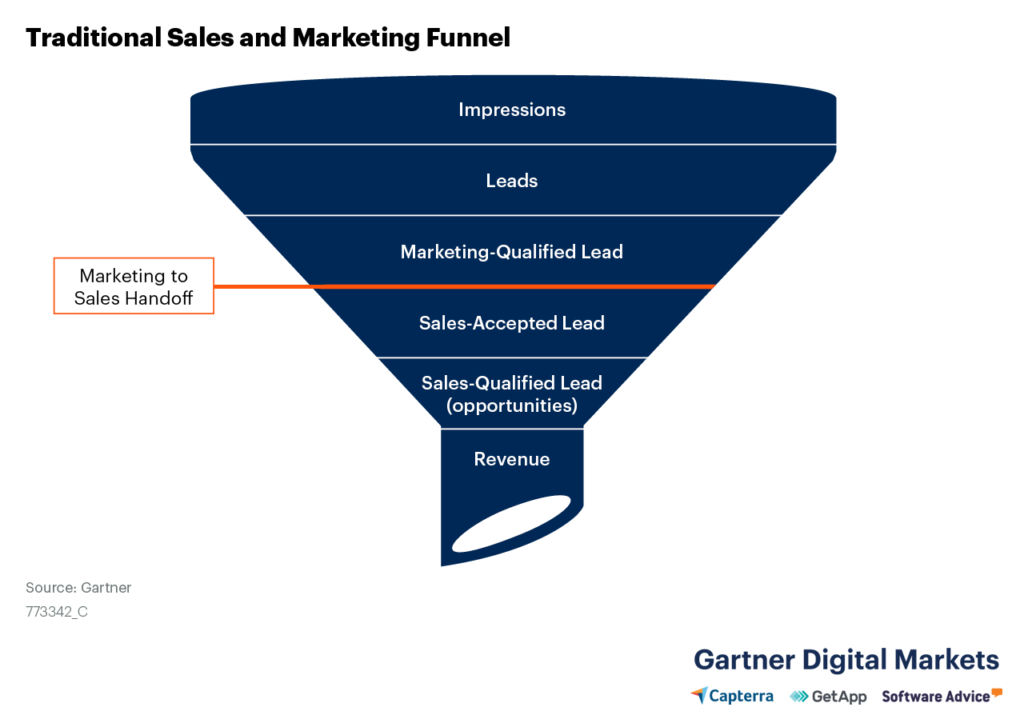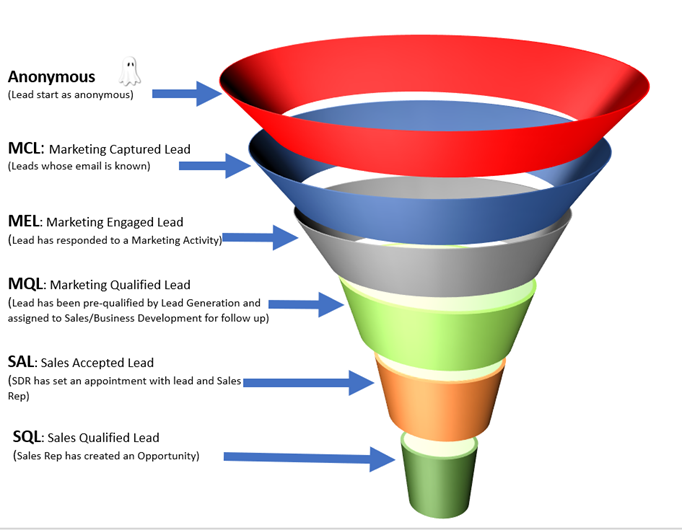Marketing Qualified Leads Are Dead – Here’s What’s Next
For years, the marketing qualified lead (MQL) was the gold standard for measuring success in B2B demand generation. Teams poured resources into capturing form fills, webinar sign-ups, and gated content downloads in hopes of fueling their pipeline. But the way buyers research and engage with companies has changed dramatically.
Today, MQLs no longer tell the full story of buyer intent. Relying solely on them creates silos, misaligns sales and marketing, and often results in wasted effort. To keep pace with modern buyers, organizations need a new framework that reflects engagement
Quick Takeaways
- MQLs no longer reflect how modern B2B buyers evaluate solutions.
- Overemphasis on MQL volume often creates friction between sales and marketing.
- Pipeline-qualified metrics such as sales accepted leads (SALs) and revenue qualified leads (RQLs) offer stronger alignment.
- Intent data, engagement scoring, and account-based strategies now provide better visibility into buyer readiness.
- Organizations must shift focus from lead volume to revenue impact to stay competitive.
Why Marketing Qualified Leads Are Losing Relevance
The traditional MQL model was built for an earlier era of B2B marketing, when lead generation relied heavily on capturing contact information in exchange for content. A whitepaper download or webinar registration was often enough to classify someone as “qualified.”

The problem is that today’s buyers engage on their own terms. They access information across multiple channels, often without filling out a form. By the time they reach out to a vendor, they may already be 70% through their decision-making process. MQLs fail to capture these hidden signals of intent, making them less predictive of revenue outcomes.
The Cost of Clinging to MQLs
Continuing to rely on MQLs as the primary metric creates several challenges:
Misalignment Between Sales and Marketing
Marketing teams may celebrate hitting MQL targets, while sales teams dismiss the leads as unqualified. This disconnect undermines collaboration and wastes resources.
Poor Buyer Experiences
When someone downloads a single asset and is immediately bombarded with sales calls, it creates friction and damages brand credibility. Buyers expect more personalized, relevant interactions.
Inaccurate Forecasting
Because MQLs are activity-based rather than outcome-based, they provide little predictive value for revenue. Organizations that rely on them risk overestimating pipeline health.
What’s Next: Beyond the MQL
Forward-thinking organizations are moving away from MQLs and adopting frameworks that better reflect buyer readiness and revenue impact. Instead, they are implementing models that prioritize engagement quality, sales alignment, and direct contribution to the pipeline.

Sales Accepted Leads (SALs)
SALs ensure marketing and sales share accountability for lead quality. A lead is only considered accepted once sales confirms it meets agreed-upon criteria such as budget, authority, need, and timeline. This reduces wasted handoffs and increases trust between teams. Organizations that adopt SALs often see shorter lead response times and better conversion rates.
Revenue Qualified Leads (RQLs)
RQLs take alignment a step further by tying qualification directly to pipeline potential. Rather than focusing on activity metrics, RQLs measure leads based on their likelihood to generate revenue. This shifts marketing’s role from lead generation to revenue contribution. Companies using RQLs gain clearer visibility into marketing’s true impact on business growth.
Engagement-Based Scoring
Traditional scoring models often give disproportionate weight to single actions, like downloading a whitepaper. Engagement-based scoring considers the full buyer journey: multiple touches, time spent on site, event attendance, and social interactions.
By evaluating both depth and frequency, marketing can better identify prospects who are genuinely interested and ready to buy. This creates more accurate forecasts and ensures resources focus on the right opportunities.
The Role of Intent Data and Account-Based Marketing
Intent data is now a critical piece of the puzzle. By analyzing signals such as third-party content consumption, search activity, and peer reviews, organizations can identify accounts that are actively researching solutions.
When paired with account-based marketing (ABM), intent data helps focus resources on the companies most likely to convert. This shift from individual leads to account-level engagement aligns with how buying committees make decisions in B2B markets.
Steps to Move Beyond MQLs
1. Redefine Success Metrics
Lead volume alone no longer indicates pipeline health. Update KPIs to focus on revenue-driven outcomes such as sales accepted leads (SALs), opportunities created, and closed-won deals. This ensures marketing is evaluated by its contribution to growth, not activity.
2. Strengthen Sales and Marketing Alignment
Misalignment is one of the biggest challenges in moving beyond MQLs. Create shared definitions for lead stages, formalize SLAs, and hold joint reviews to keep both teams accountable. This alignment builds trust and ensures leads are worked consistently.
3. Incorporate Intent Data and Engagement Scoring
Surface-level interactions don’t tell the full story of buyer readiness. Combine third-party intent signals with first-party engagement data to build a richer view of prospects. This helps teams focus on accounts that are actively researching solutions and more likely to convert.
4. Shift Toward Account-Based Strategies
B2B decisions are rarely made by a single person. Adopting account-based approaches allows marketing and sales to engage buying committees across multiple touchpoints. Success is measured by account engagement and pipeline influence rather than individual form fills.
5. Continuously Test and Refine
No framework works perfectly from the start. Regularly assess lead quality, pipeline contribution, and revenue impact to refine your approach. Continuous testing ensures your model evolves with changing buyer behavior and remains predictive over time.
Overcoming Common Challenges
Cultural Resistance
Teams used to MQL-driven models may push back on change. Executive sponsorship and clear communication are essential to gain buy-in. Phased rollouts and celebrating early wins help build trust in the new approach.
Technology Integration
Adopting intent data and ABM requires seamless connections across marketing automation, CRM, and analytics systems. Without integration, data silos form and insights lose value. Choosing tools with open APIs and strong vendor support makes adoption smoother.
Measuring ROI
Moving past MQLs requires redefining success metrics. Establish baselines, then track pipeline contribution, velocity, and closed revenue. Transparent reporting proves the model’s value and secures continued support.
Unlock Smarter Demand Generation Today with Televerde
The marketing qualified lead may be dead, but what comes next is far more valuable. By embracing intent-driven insights, account-based strategies, and revenue-aligned metrics, organizations can deliver stronger buyer experiences and more predictable growth.Ready to build a demand generation strategy that goes beyond MQLs? Televerde helps you align sales and marketing, harness intent data, and focus on revenue-driving outcomes. Contact us to learn more.


